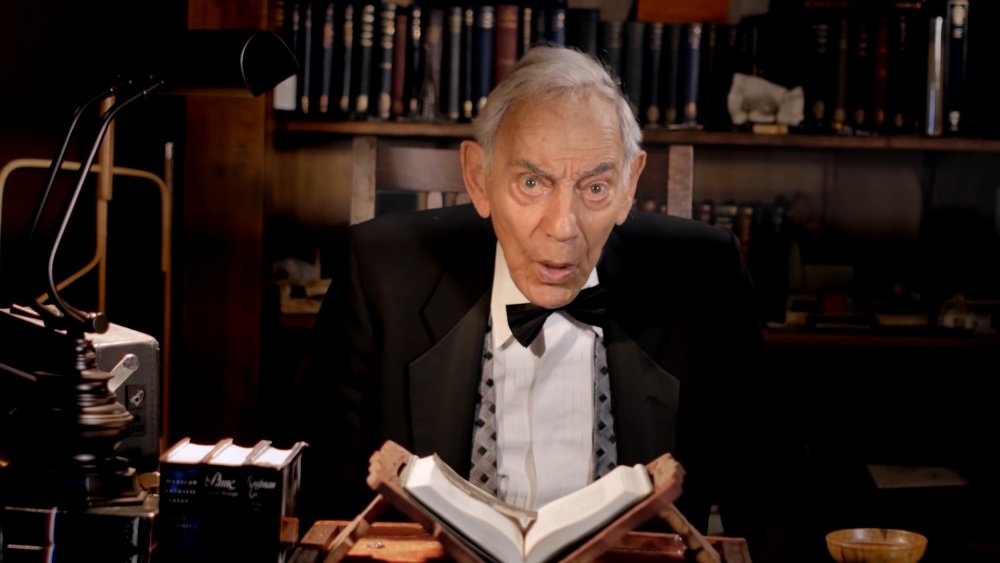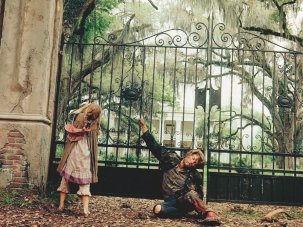Violence, mayhem and murder most foul are the meat and gravy of American cinema, but if one man can be said to have added the ketchup it was Chicago-based filmmaker Herschell Gordon Lewis, originator of the gore film and one of the horror genre’s most charismatic figures. His death this week at the age of 90 brought to a close a vibrant and memorable career.
Working at the fringes of the American film industry as a regional independent in the 1960s and early 70s, Lewis made movies in a variety of genres, but it was his output in the field of horror that enshrined his commercial reputation. His films took screen violence to shocking new extremes, chopping and slicing and mincing the human body in ever-more inventive and hideous ways.
And yet, while his imagery was frequently repulsive, the films remain oddly charming. Lewis raised bloodshed to the brink of absurdity and then gave it a hearty push over the edge, and while the results can make the unwary gag a little, the films are rarely depressing or upsetting.
Instead they convey a rambunctious sense of fun and provocation. It may seem an odd assertion when dealing with such violent material, but fans of Lewis really do love his movies. They adore his brash showmanship and revel in his riotous black humour. Lewis knew how to tickle an audience: gruesome murders are presented in his work with the obstreperous relish of a kid throwing a rotten dog carcass into a swimming pool, and it’s the gleeful anarchic childishness that amuses (or offends) as much as the gore itself. Any attempt to drag the films into a sober adult context deserves the same raspberry a 15-year-old might give a stuffy high school teacher: when a critic for the French film magazine Cahiers du Cinema wrote that Lewis was “a subject worthy of further study”, Lewis himself quipped, “That’s what they say about cancer.”
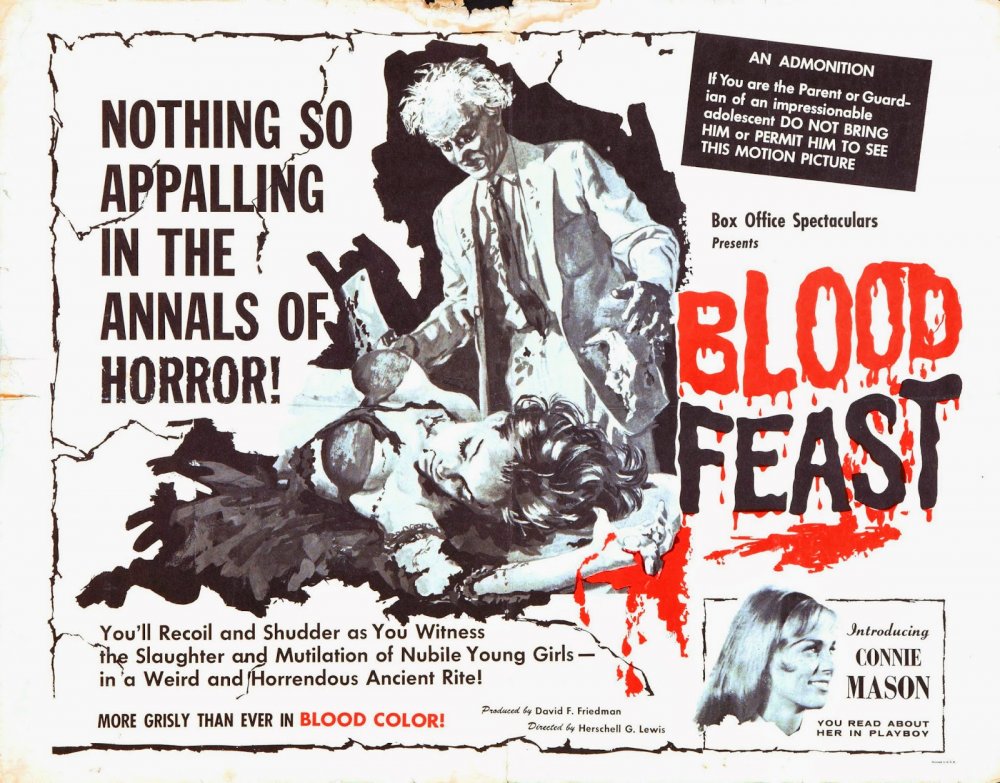
Herschell Gordon Lewis was born in 1926 in a suburb of Pittsburgh, Pennsylvania. His father died when he was six, and he moved with his mother Geraldine to Chicago’s North Side when he was 12.
Graduating from Senn High School, Chicago, he entered higher education at Northwestern University’s Medill School of Journalism in Evanston, Illinois, obtaining Bachelor’s and Master’s degrees in journalism in the late 1940s. He left college intending to be a magazine editor but abandoned this after finding no avenues open at the time. For a while he became a high school English teacher, then a salesman selling storm windows door to door, until a career in broadcasting and advertising took root: he sold airtime for a radio station in Coatesville, Pennsylvania, which led in 1950 to a similar job for Radio WRAC in Wisconsin. There he was swiftly promoted to station manager. Turning his eye towards television he scored a position as a director for WKY in Oklahoma City, but returned to Chicago after a school friend invited him to shoot adverts for a Chicago agency called Alexander and Associates. When the company hit the rocks in 1953, Lewis and a business associate, Martin Schmidhofer, took it over, renaming it Lewis and Martin Films.
On the side, Lewis took a job writing copy for the Chicago-based Morlock advertising agency, a long-established ‘direct-mail’ (aka junk mail) company for whom he continued to work throughout the 1960s. The expertise he cultivated in this field would eventually secure his ticket out of the film industry, leading to a slew of writing and speaking engagements on the subject for decades to come.
One day in 1959, Lewis found himself discussing, with an advertising crony, how to profit from the business they were in. Having concluded that the only way to earn serious money was to “make features”, he decided to take his own advice, and met for a chat with Irwin S. Joseph, a Chicago-based producer/distributor who’d made a packet acquiring distribution rights to ‘sex-hygiene’ films (pictures that peddled ‘moral messages’ while showing as much prurient detail as possible).
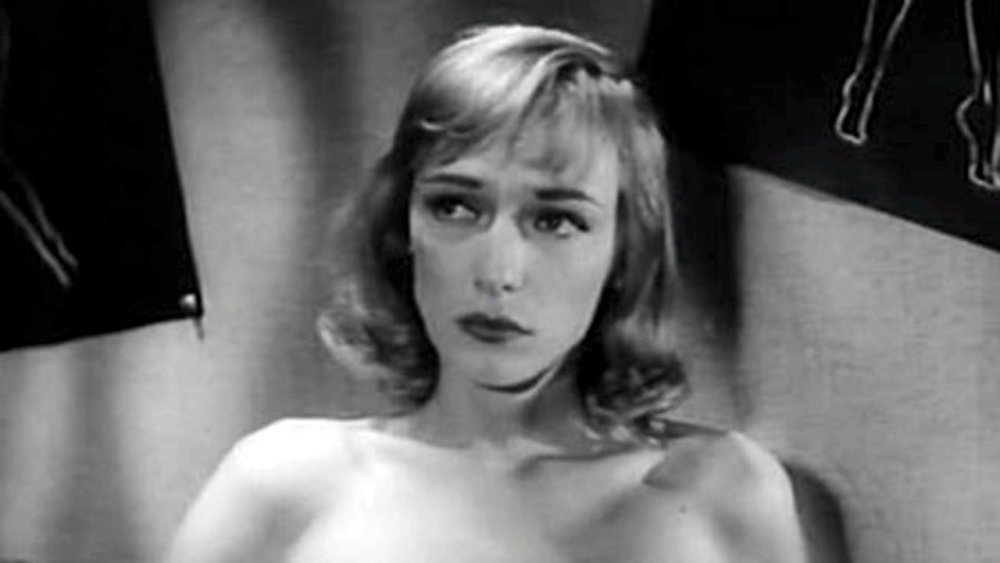
The Prime Time (1960)
The result of their meeting was The Prime Time (1960), the first feature film to be produced and shot entirely in Chicago since the closure of the famous Essanay studio where Charlie Chaplin made some of his early silents. Lewis produced but didn’t direct The Prime Time, leaving the latter job to an ad-company associate, Gordon Weisenborn, but after rueing that decision he chose to direct his next project himself: the result was Living Venus (1960), about the rise and fall of a girlie magazine editor, based loosely on Hugh Hefner.
Both The Prime Time and Living Venus were attempts to make ‘normal’ feature films, with an emphasis on plot and character. Unfortunately both of them bombed, and things became so dire for Lewis that he found himself literally back on the street, selling encyclopedias door to door.
Not a man given to moroseness, his next film The Adventures of Lucky Pierre therefore took a different approach. The route to success, he decided, was to find the lowest common denominator then milk it, and milk it hard. At the tail-end of the 1950s a format known as the ‘nudie-cuties’ had reconfigured an earlier exploitation trend, the nudist film (pseudo-documentaries promoting naturism as a healthy way of life), replacing pro-naturist rhetoric with comedy and fantasy. Scenting commercial hay, Lewis (now working with fellow exploitation legend David F. Friedman) cranked out five such films in two years.
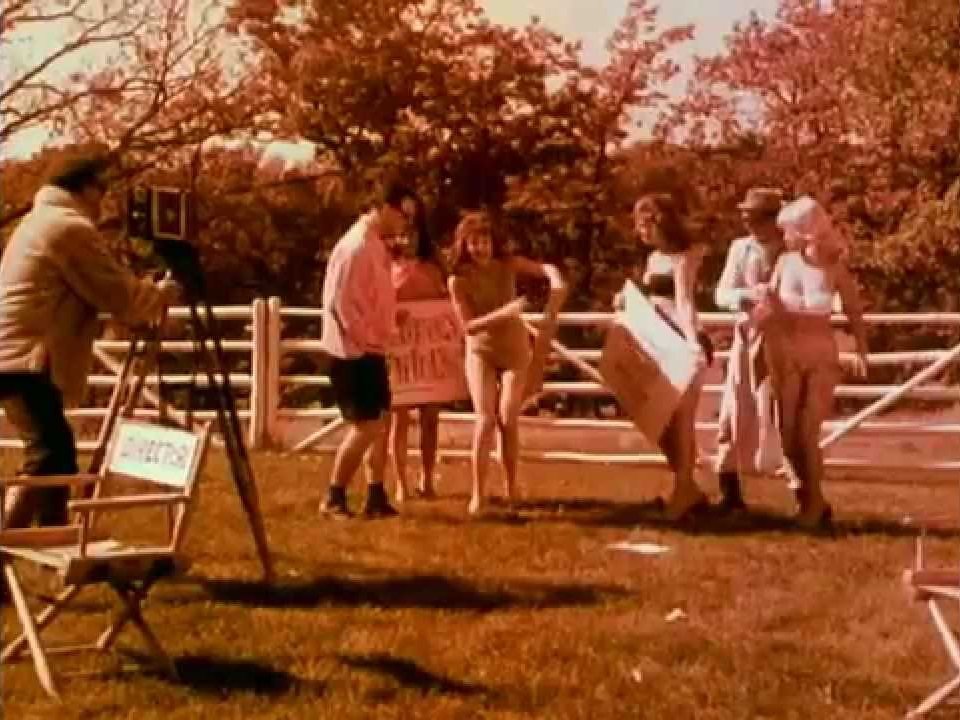
On location with the cast and crew of Boin-n-g (1963)
Although the nudies made money, Lewis soon grew restless (proving that man cannot live on strategically placed beachballs alone) and began puzzling over where to turn next. In an interview for The Chicago Tribune in 1972, he explained how he came to create the seminal film of a new genre:
“Around 1963 I came to the conclusion that every theater owner who had played Lucky Pierre was about to make a sex film, and that that particular market would become unbearably crowded. I also thought that these kinds of pictures would degenerate into something that didn’t require a filmmaker; someone just had to turn on the camera and graphically record the sex act. So the question became, which type of product wouldn’t be in competition with the major film companies? The answer, I felt, was in the area of gore. No one had ever made such a picture. There had been horror films, but people always died with their eyes closed, people were shot and never had a stain of blood, and the most that could be expected was a very neat bullet hole through the forehead.”
Lewis had found the motherlode. There was a taboo in the movies against showing the torn mangled flesh of bleeding screaming victims – but oddly enough, no actual law against it. Blood Feast, Lewis’s first foray into blood and guts, was shot in five days in February 1963, for $24,000, and it earned him his place in cinema history. The story of a mad Egyptian caterer carving up Florida’s beehived beauties to recreate an ancient offering to the goddess Ishtar, it transcended its limitations to become a runaway drive-in hit and the progenitor of a new kind of horror film.
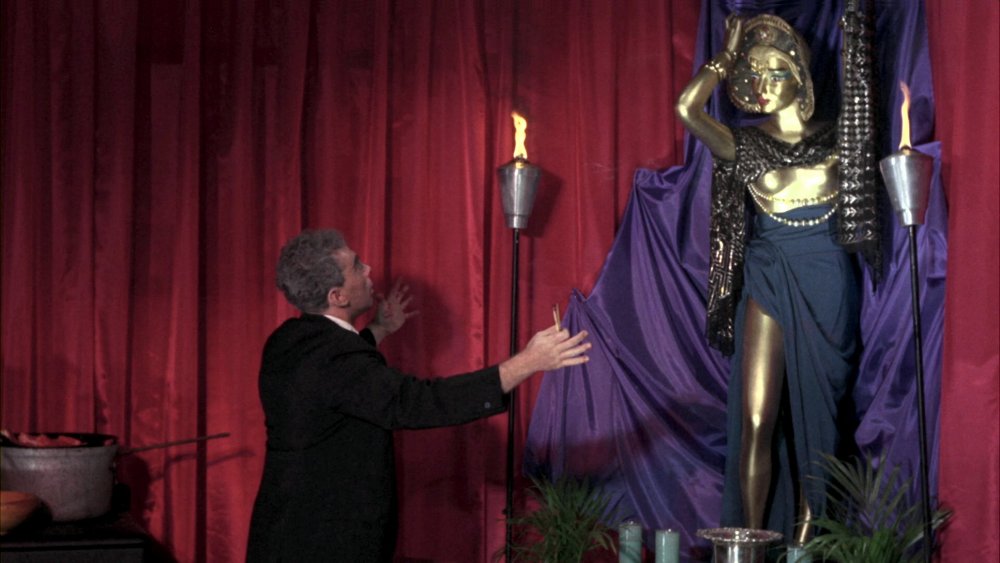
Blood Feast (1963)
With the possible exception of Dali and Buñuel’s Un chien andalou, Blood Feast was the first film designed not only to shock viewers, but also to wilfully revolt them. In a sequence that lingers in the mind of anyone who sees it, a woman’s tongue (a foot-long mass of cranberry-coloured excreta) is ripped from her mouth. Another victim has her leg cut off at the knee. A moonlight tryst at the beach ends with a girl’s brain ripped out. The pièce de résistance, a tabletop evisceration, presents a Grand Guignol vision that’s simultaneously repulsive and astounding. If there’s a fertilising moment in the Cinema of Bad Taste, this is it. Audiences in 1963 had seen nothing even remotely like it before.
Clumsily shot, terribly acted, and with a script so banal that Lewis used not a single line of it when he novelised the film a year later, Blood Feast ought to be impossible to watch. Instead, the technical shortcomings strike sparks against the outrageous violence and Lewis’s underlying sense of the ridiculous. Yes, the film is disgusting, but there’s hilarity in its butcher-shop mayhem, and to be outraged is to play straight man to Lewis’s wind-up. Unless you’re a ‘concerned parent’ or ‘PTA member’ with a yen for writing to local newspapers about the decline of moral standards, Blood Feast is impossible to take seriously. Its eruptions of gore are carnivalesque, and the film’s villain, Fuad Ramses, is as bizarrely emphatic as a circus clown.
Blood Feast reserved Lewis’s place in the history books, but his favourite of his own films was the follow-up, Two Thousand Maniacs! (1964), a rollicking tale of a confederate ghost town whose population rises from the grave every one hundred years to avenge the Yankee massacre of their settlement. The victims, six preppy visitors from the north conned into accepting roles as ‘guests of honour’ at a bogus centennial, are despatched with maniacal good humour by capering ‘good ole boys’ who, while they may be ghosts, take vengeance in hideously physical ways. Lewis not only wrote, shot and directed the film, he also penned its infernally catchy country bluegrass songs (try getting The South’s Gonna Rise Again’ out of your head after watching it).
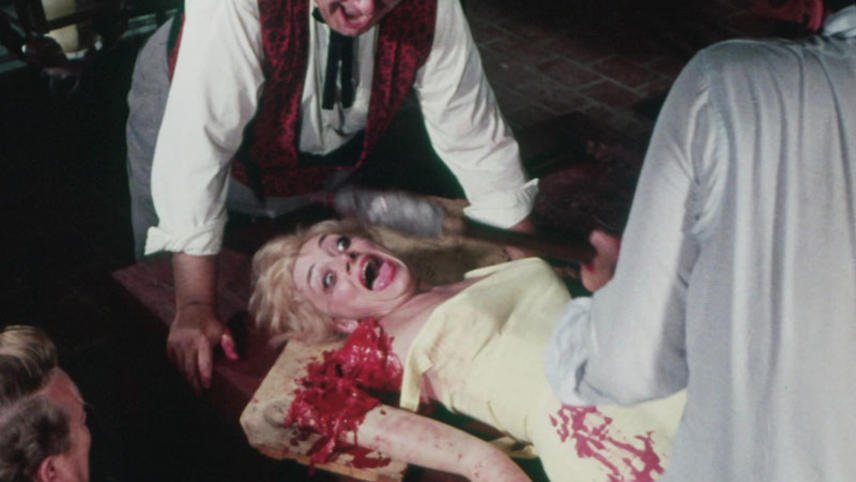
Two Thousand Maniacs! (1964)
Nothing tests a friendship like money, and the same goes double when business is involved. Lewis’s gory brainwave was a box-office smash, but sadly his business relationship with David Friedman collapsed less than a year after Blood Feast was released.
The root of the problem was Stanford Kohlberg, a business partner in Lewis and Friedman’s company Box Office Spectaculars. According to Lewis, Kohlberg convinced him, Friedman and fellow investor Sidney J. Reich to hold back funds from Blood Feast and Two Thousand Maniacs! to provide capital for a permanent production house. Kohlberg was supposed to take care of the investment side while Lewis got on with shooting a third gore film, Color Me Blood Red, on location in Florida.
However, funds for Color Me Blood Red slowed to a trickle and Lewis grew suspicious. Back in Chicago, an acquaintance at the bank informed him that no money had been invested: Kohlberg had stiffed his partners. Lewis, Friedman and Reich sued, but the ground was cut from beneath Lewis’s feet when Friedman, out of the blue, settled unilaterally with Kohlberg. When fellow litigant Reich died, Lewis found himself the last man standing, ultimately walking away with a settlement that bore no relation to the actual profits of his films.
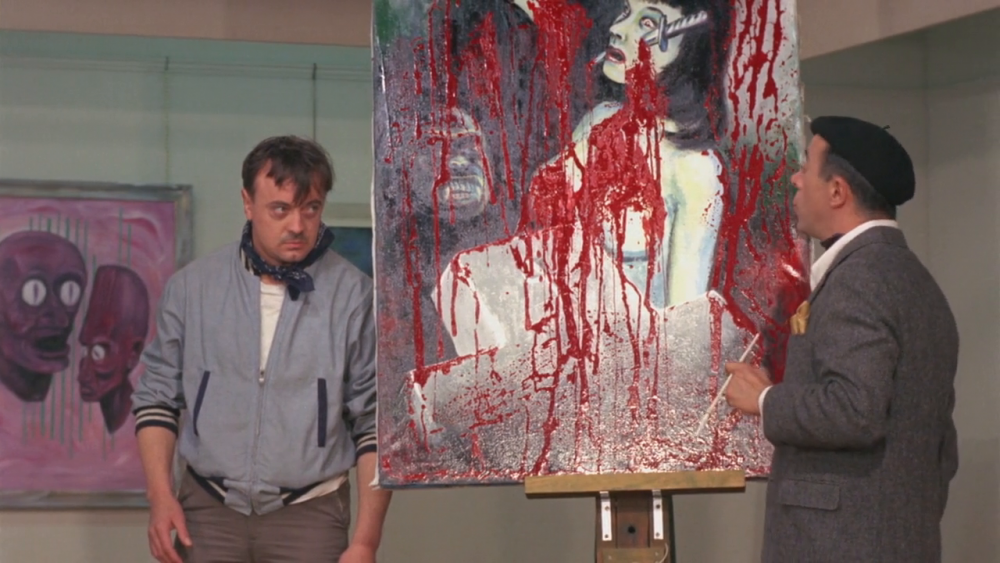
Color Me Blood Red (1964)
In the meantime Lewis returned to gore with The Gruesome Twosome (1967), featuring a mild-mannered old lady who covers up for her murdering son because his penchant for scalping female victims has the agreeable side-effect of providing new wigs for her wig shop. Cod-metaphysical speeches regarding the nature of reality and perception added extra weirdness to the plum-crazy The Wizard of Gore (1970), while The Gore Gore Girls (1972), perhaps the grisliest Lewis film of all, featured a murderer bumping off strippers while being hunted down by a camp detective channelling John Steed and Jason King.
In between these bloodier projects, Lewis directed contributions to numerous exploitation subgenres: the under-rated Moonshine Mountain (1964) was a hillbilly comedy-adventure about local police corruption and illegal liquor, interspersed with country music; Something Weird (1966) and A Taste of Blood (1967) were supernatural horror films about a (very creepy) witch and a (rather dull) vampire respectively; The Girl, the Body and – The Pill (1967), Suburban Roulette (1968) and The Alley Tramp (1967) were sexploitation potboilers about changing attitudes to teenage sex, and marriage in the age of sexual liberation; Blast-Off Girls (1967) was a Monkees-style exposé about music-biz chicanery; while Just for the Hell of It (1968) and She-Devils on Wheels (1968) were, respectively, a magnificently chaotic juvenile delinquent flick and a camp female biker movie, with the latter boasting nearly as much violence as the gore films.
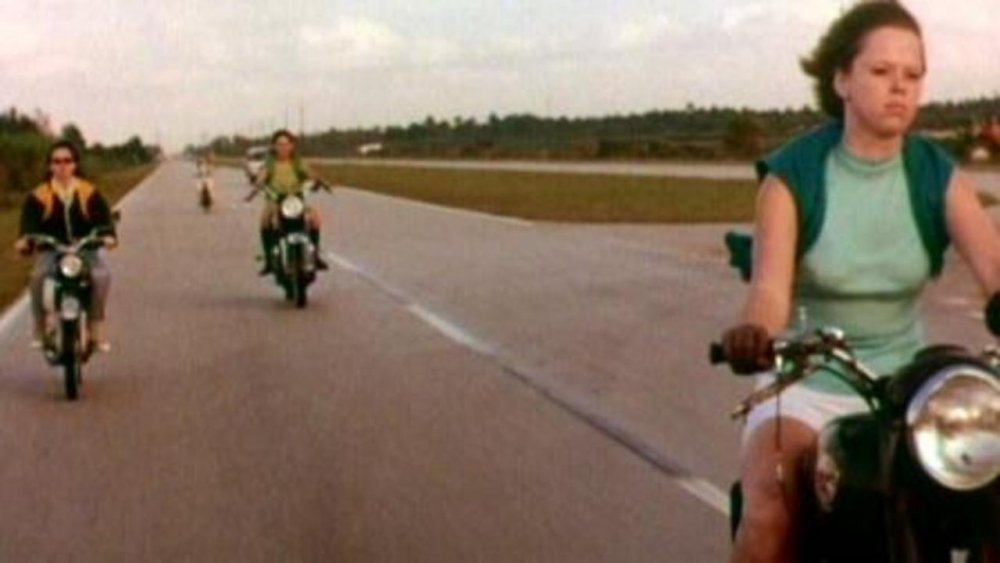
She Devils on Wheels (1968)
Hardcore Lewis fans also get a kick out of bizarro (or borderline unwatchable) projects like Jimmy the Boy Wonder (1966), a kid’s adventure which he directed for an Eisenhower-era husband-and-wife team who specialised in pre-school children’s TV shows, and Santa Visits the Magic Land of Mother Goose (1966), a freakishly weird stage-play for children shot with a view to creating a film version of a touring regional theatre show.
In the spring of 1972, as The Gore Gore Girls was being edited, Lewis was riding high. He had a suite of offices in the prestigious Wrigley Building on Chicago’s North Michigan Avenue, with en-suite cutting and screening rooms and his own camera and lighting equipment. A sizeable art department on the premises enabled him to design and produce his own graphics: poster art, press materials and trailers were designed by Lewis himself. On top of all this, he owned three Chicago-area theatres, ran an advertising agency, and was involved in country club management. He was a member of the faculty at Roosevelt University, and his book The Businessman’s Guide to Advertising and Sales Promotion was about to hit the shelves, published by McGraw-Hill.
So why did he stop making movies? In interviews he cited the arrival of hardcore pornography, plus the increasing popularity of bigger-budgeted violent movies. In reality the reason had more to do with his digression into fraudulent business ventures, including a phoney car-rental agency and a distinctly dodgy abortion-referral service. He spent time in prison in the latter half of the 1970s, sold the rights to his remaining films to cover costs, and when he came out of jail had no further appetite for cinema, until the early 2000s when coaxed back by fans to shoot a sequel to Blood Feast (the less than enchanting Blood Feast 2: All U Can Eat).
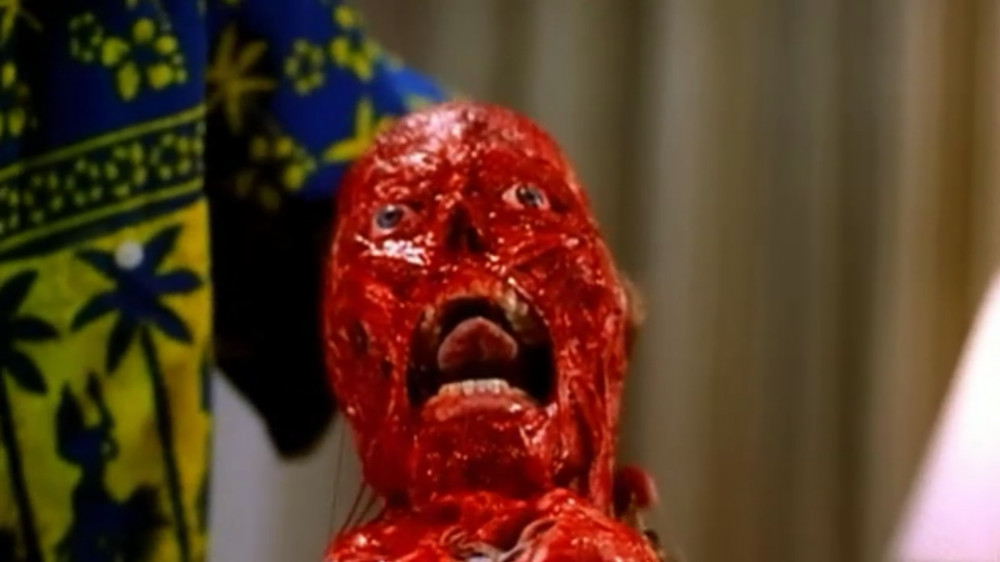
Blood Feast 2: All U Can Eat (2003)
Despite their amateurish performances and rampant technical shoddiness, time does not have to be kind to Lewis’s films. There’s no need to coddle his memory, as some bad movie buffs do that of Edward D. Wood. Blood Feast does not cry out for the pity of an indulgent audience, nor will Lewis ever need some future Tim Burton to cheerlead his oeuvre. Implicit in Blood Feast, and explicit in Lewis’s later films, is the feeling that we’re being played, like fish by an angler; that the filmmaker is having a laugh at the expense of anyone unprepared for his butcher-shop hi-jinx.
Jocular and sly, with a breezy disregard for propriety and that particular taste for crudity that only the sophisticated can cultivate, his best work will always raise eyebrows, shock prudes and delight the unrepentant adolescents of the future. There’s no doubt that the modern horror film owes a chromosome to Lewis, as seen in the bloodline of everything from Friday the 13th (1980) to Hostel (2005). And we can be sure that for many many years to come, if someone screens a Lewis film for the amusement of their friends, there will always be the chance that someone will retch, or shriek, or – as John Waters once memorably put it – give the ultimate standing ovation, and barf.
-
The Digital Edition and Archive quick link
Log in here to your digital edition and archive subscription, take a look at the packages on offer and buy a subscription.




